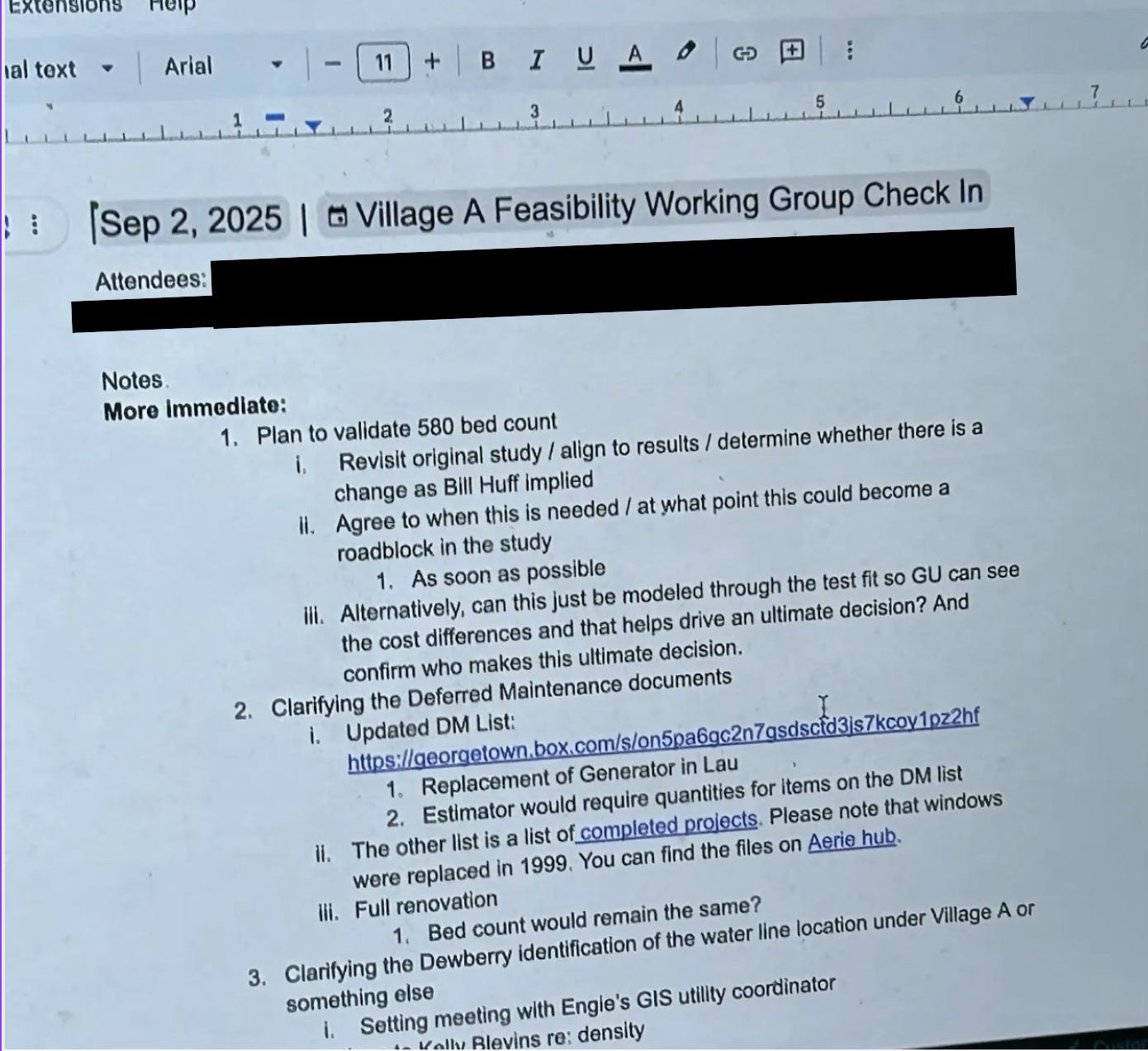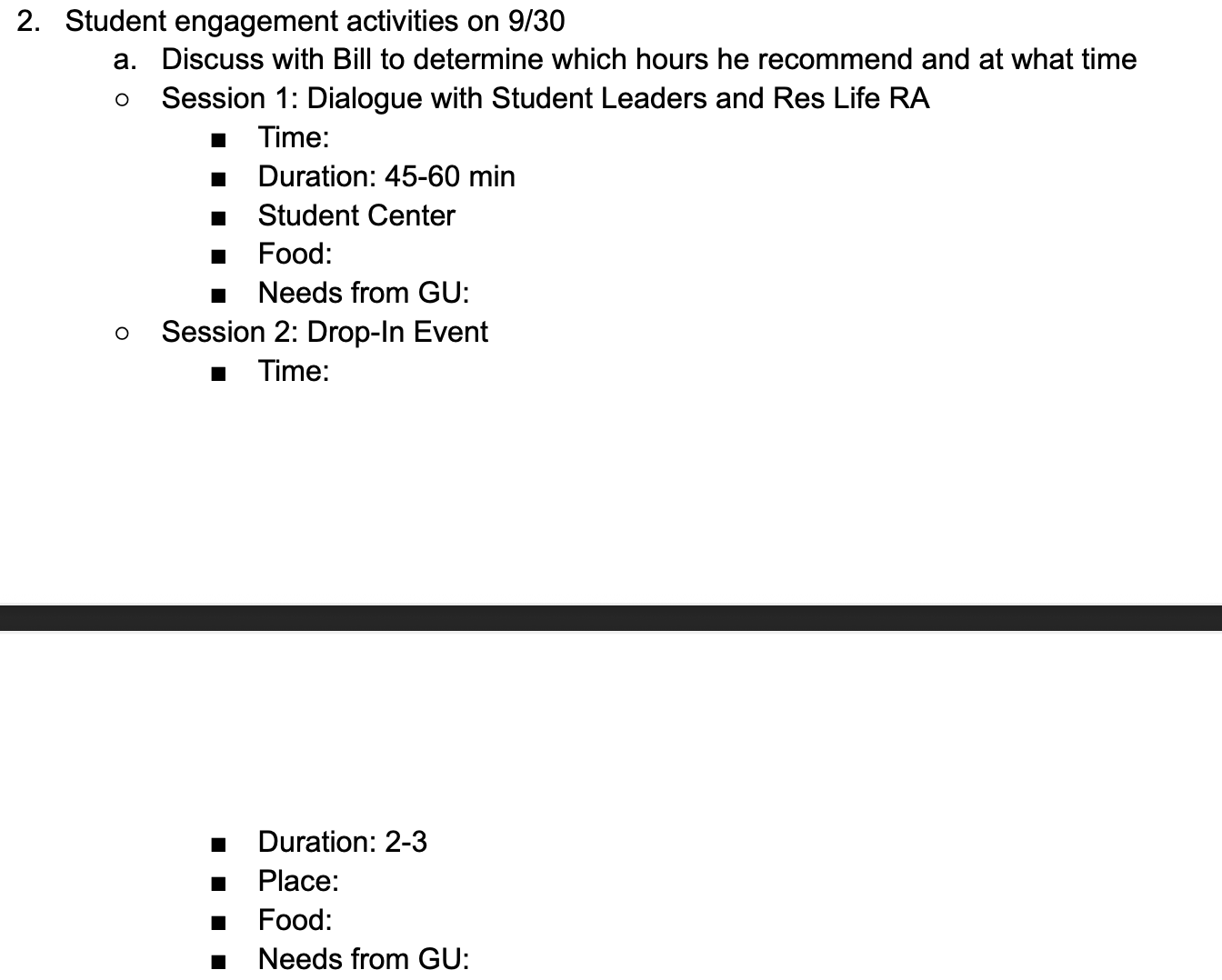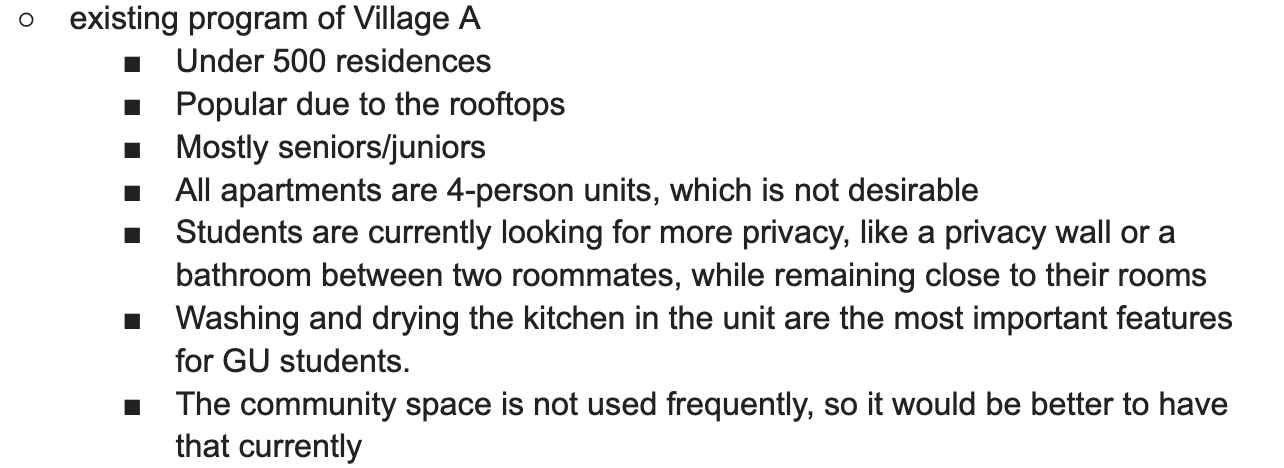Today is the first day of a public Academy — but, more importantly, it is the beginning of our fight to restore the spirit of Georgetown.
Not only has the university begun to plan for the Village A redesign but the project is well underway. The Academy has exclusively obtained meeting notes from the Village A Feasibility Working Group, which indicate that the new design is more than likely to bring an end to the complex’s rooftops — and unsanctioned social life at Georgetown along with it. Administrators are both conscious of the likelihood of and prepared to counter student dissent. Village A has been the beating heart of Georgetown life for generations; it is now under direct threat.
Administrators are aware that the changes they plan to make will be controversial. In discussing the redevelopment with alumni, the working group elected to push back from Alumni Weekend (Homecoming) on October 3-4 because “engagement could be problematic as they are attached to the previous idea of the building.” The working group hopes to engage alumni later, once the plans are finalized, to reach the fundraising goals that the project will require. They plan to cement drastic changes and would clearly prefer to apologize rather than ask for permission.
The Academy has obtained documentation of a clearly-set timeline — to begin a final design in March 2026, seek approval through zoning boards and permits through June, and to begin construction in 2028. The University has already hired an architecture firm that has begun to conduct a feasibility study and mock up designs — Perkins & Will. That firm makes up the majority of “Feasibility Working Group” meetings.
(Names of Perkins&Will and Redgate employees have been blocked to protect their privacy)
Of course, however, administrators are aware of their general obligation to converse with students on such a drastic change. The Feasibility Working Group has already determined (on September 2) that they will hold sessions for student engagement on September 30 — one session for a “Dialogue with Student Leaders and Res Life RA” for 45-60min in the Healey Family Student Center, and a “Drop-In Event” for an unclear amount of time in an unclear location. As of the publication of this article — less than two weeks in advance of these listening sessions — none of these events have been announced publicly.
Despite this obligation to engage students, the university intends to delegate the task of informing and answering questions from the student body to Perkins & Will. When Arrupe Hall was built in 2016, the architecture firm Sasaki Associates managed university listening sessions in lieu of administrators. Internal documents obtained by the Academy reveal that administrators plan to do the same via Perkins & Will.
Unsurprisingly, however, administrators also proposed a plan to ensure that students do not have the opportunity to clearly and uniformly voice their concerns. In the Feasibility Working Group’s August 18 meeting, Bill Huff (Executive Director of Residential Operations & Business Development) suggested an alternative model in which students come and go throughout the hour to encourage them to not stay for the entire session.
Altogether, administrators display both profound awareness and disassociation with regard to the needs and desires of students throughout their plans. While they understand that Village A is “popular due to the rooftops,” plans also state that “washing and drying [and] the kitchen in the unit are the most important features for GU students,” that “students are currently looking for more privacy,” and that four-person units are “not desirable.” While of course these factors are relevant, they can by no means be universalized throughout the student body, especially at the expense of the complex’s rooftops.
And along with that will be the end of Village A rooftops. Documents viewed by members of the Academy suggest that all existing mockups of any new complex will eliminate publicly accessible rooftops in favor of a model of housing more similar to the New Henle complex — self-contained apartments with that aforementioned washing, drying, and kitchen, but with no broader unregulated public area.
This publication’s own mission statement describes its intention as a “doomed countercultural project.” In a way, the decline of Georgetown into an institution that refuses liability, that refutes its duty to subsidize the creative energies of its students, and that straightforwardly pushes careerism onto its vulnerable undergraduates seems inevitable and this project must be doomed as a result.
Yet if any issue can combine the requisite gravity, urgency, and parsimony for the student populace of Georgetown to invest itself it must be this one. We as a body must learn to grasp the weight of such administrative defiance and negligence, the implications of allowing administrators to continue to skirt student opinion, and the reality of the demise of any genuine and organic culture at Georgetown outside of administrative reach.
We must ensure that all engagement is problematic, because we are attached to the previous idea of the building. It is our duty as students of Georgetown to fight for it — to campaign, to protest, to lobby, to flyer — to take any necessary action required of us to ensure that the Georgetown that we inherited will be there for the classes of the future.
The hottest places in hell are reserved for those who, in times of moral crisis, maintain their neutrality. May we not falter in our commitment to build a Georgetown for tomorrow.









I think it's fair to be critical of any project on campus, but the article reads more like a morally charged activist rhetoric than a report. From what I understood, student engagement sessions are already planned and no final decision has been made yet. I would firstly try to attend these sessions before dismissing the whole project as a grand conspiracy where we are being oppressed.
We love admin astroturfing the comments on this. Only reinforces student opposition.